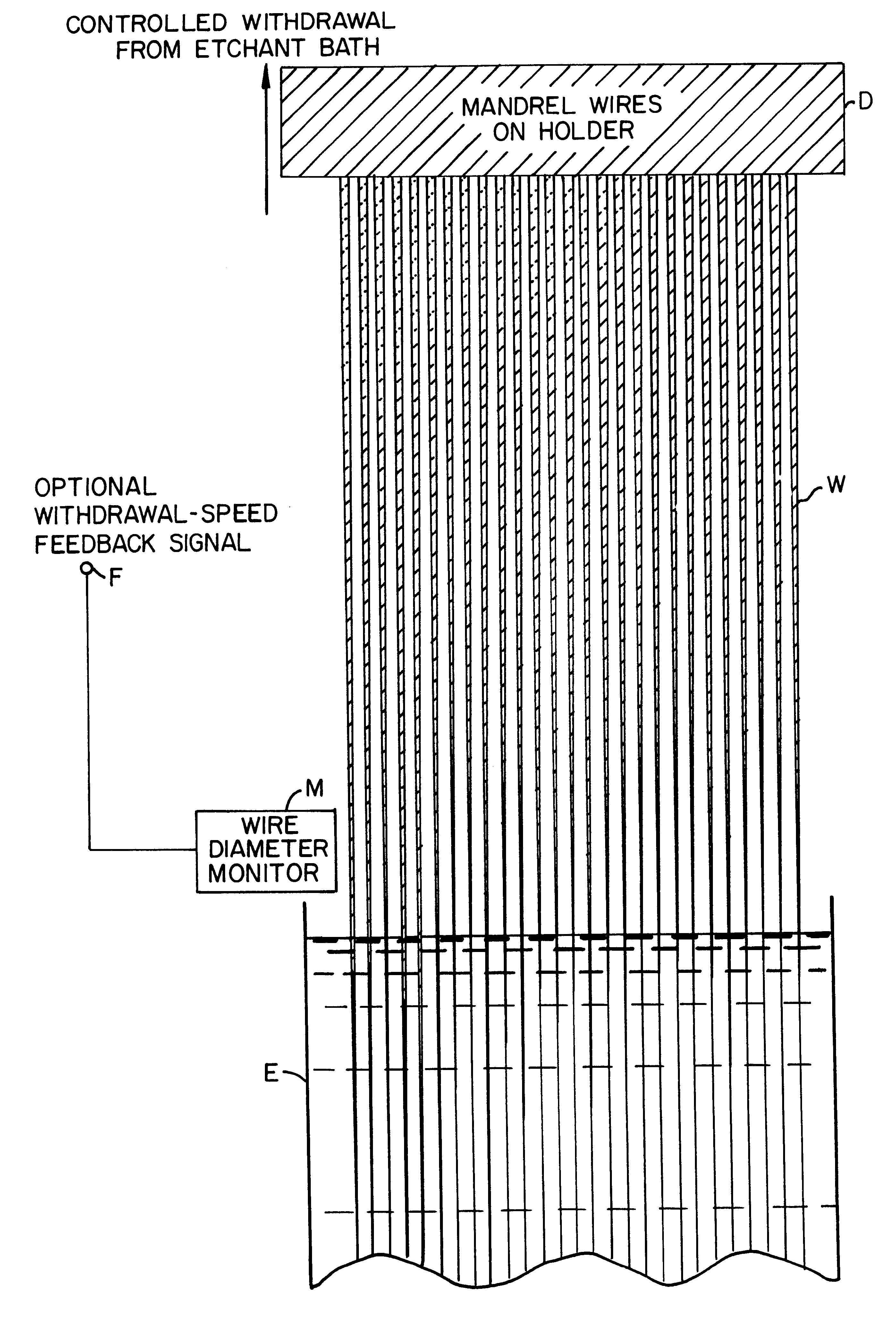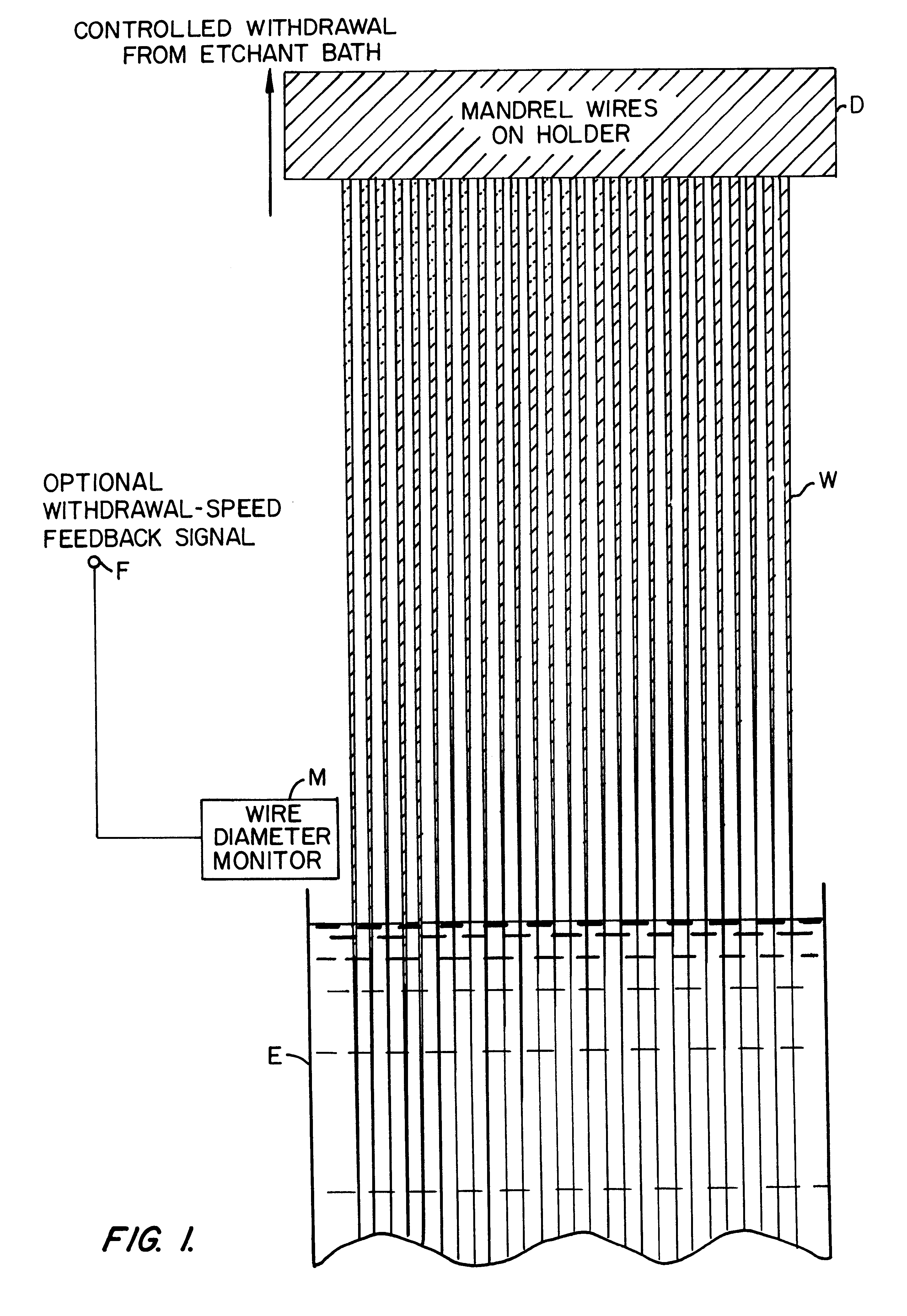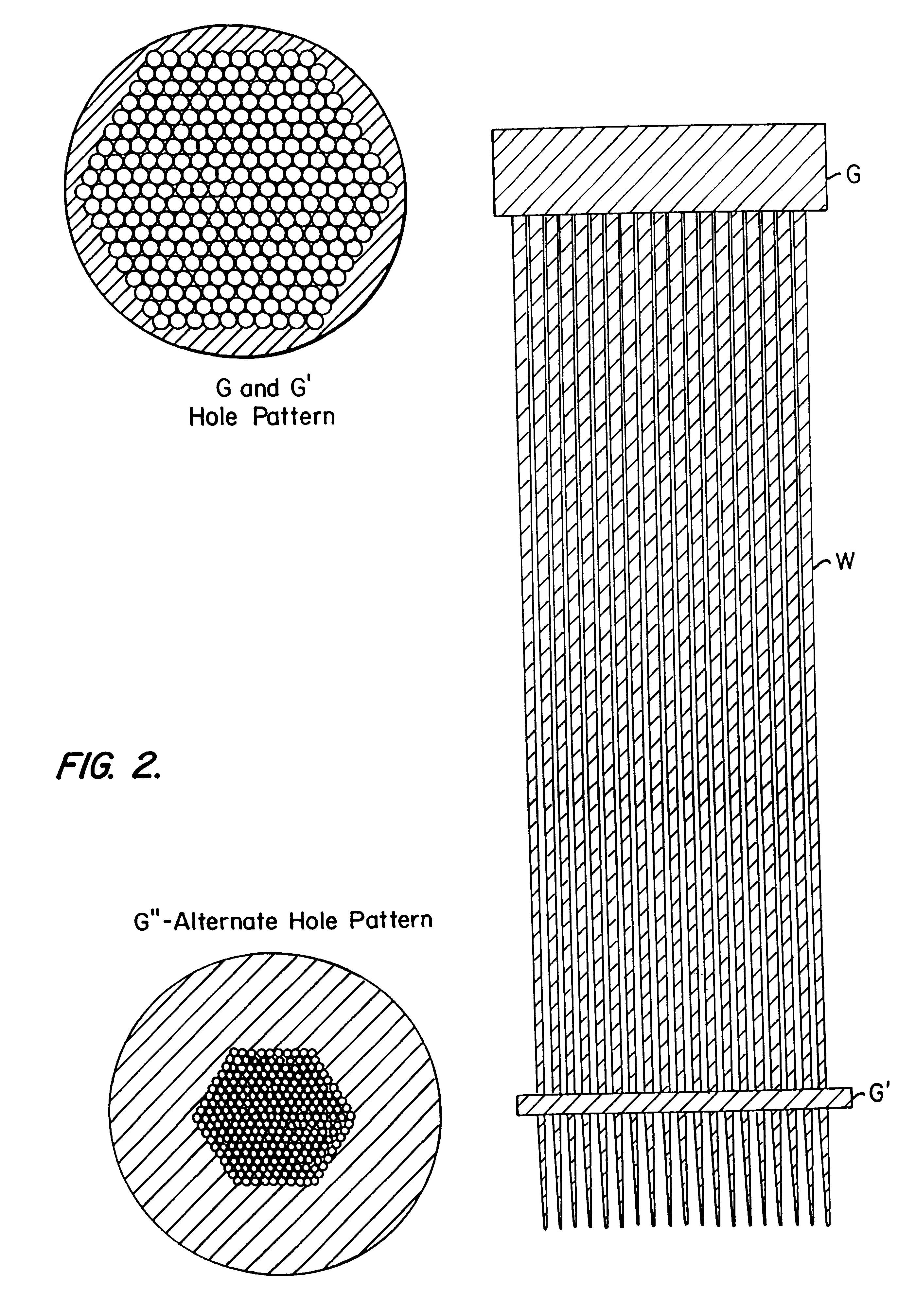Bundled monocapillary optics
a monocapillary, optics technology, applied in the field of xray optics, can solve the problems of inability to produce small spots, relatively high cost, and inability to form very small focused or collimated beams
- Summary
- Abstract
- Description
- Claims
- Application Information
AI Technical Summary
Problems solved by technology
Method used
Image
Examples
Embodiment Construction
U.S. Pat. No. 5,772,903 previously described a fabrication technique for creating tapered monocapillary optics. That patent disclosed a method for creating capillaries with the desired taper profiles on demand which could include paraboloidal, ellipsoidal, conical, or other figures. It is also possible to have a combination of different taper shapes on a single wire, such as a linearly-tapered section followed by a paraboloidal or ellipsoidal taper. The basic capillary formation process described in that patent is the following: A metal or glass wire is etched with great precision to have a taper with the shape of the desired final capillary-optics bore. By controlling the rate of removal of the wire from an etchant bath, the precisely controlled taper is produced. The wire velocity can be regulated using a closed-loop control system which uses a sensor to measure the wire diameter or slope of the wire as it leaves the etchant for feedback control. The etched wire undergoes a treatm...
PUM
| Property | Measurement | Unit |
|---|---|---|
| power | aaaaa | aaaaa |
| critical angle | aaaaa | aaaaa |
| surface roughness | aaaaa | aaaaa |
Abstract
Description
Claims
Application Information
 Login to View More
Login to View More - R&D
- Intellectual Property
- Life Sciences
- Materials
- Tech Scout
- Unparalleled Data Quality
- Higher Quality Content
- 60% Fewer Hallucinations
Browse by: Latest US Patents, China's latest patents, Technical Efficacy Thesaurus, Application Domain, Technology Topic, Popular Technical Reports.
© 2025 PatSnap. All rights reserved.Legal|Privacy policy|Modern Slavery Act Transparency Statement|Sitemap|About US| Contact US: help@patsnap.com



